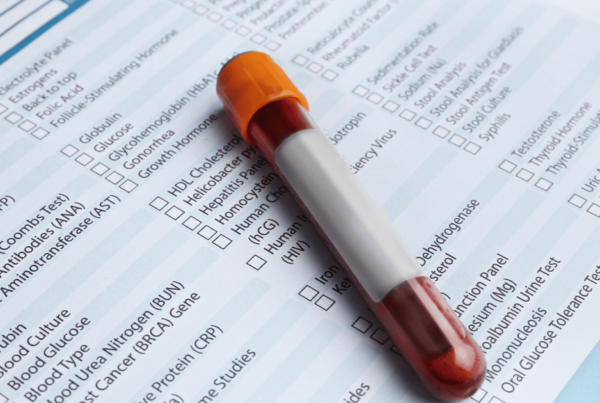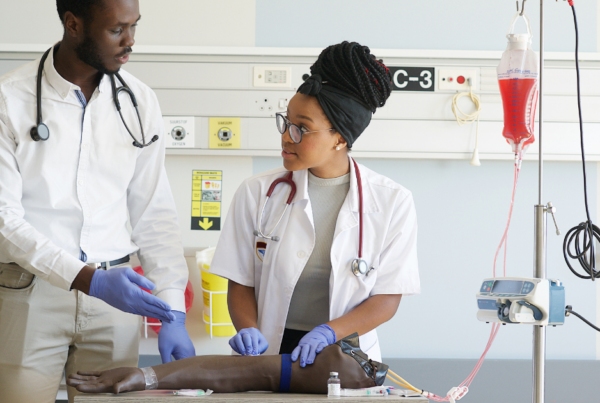A blood clot after a blood draw is an uncommon but possible occurrence that can cause discomfort and, in rare cases, lead to complications. While most people heal quickly after a routine blood draw, some individuals may experience clotting due to underlying conditions, improper technique, or other risk factors. Understanding why this happens, how to recognize symptoms, and when to seek medical attention is crucial for both patients and healthcare providers.
Although minor bruising or swelling at the puncture site is normal, an abnormal clot may lead to further issues if not addressed properly. Knowing the difference between routine healing and a problematic clot can help prevent more serious medical concerns. Additionally, awareness of risk factors and preventive measures can empower individuals to take proactive steps in reducing the likelihood of developing a clot.
| Key Takeaways: Understanding Blood Clots After a Blood Draw |
| Blood clots after a blood draw are rare but can occur due to improper technique, medical conditions, or other risk factors. |
| Minor swelling or bruising is normal, but persistent pain, warmth, or significant swelling may indicate a more serious issue. |
| SVT is a mild condition, while DVT is a more serious risk requiring immediate medical attention. |
| Preventative steps such as hydration, proper aftercare, and movement can reduce clot risks. |
| Always see a doctor if your symptoms persist or worsen. |
What Causes a Blood Clot After a Blood Draw?
A blood clot forms when blood thickens and clumps together, often as a natural response to injury. However, in some cases, clotting can occur excessively or abnormally. Several factors can contribute to a blood clot after a blood draw, including:
- Improper Venipuncture Technique – If the needle damages the vein, it may trigger clot formation. A phlebotomist must ensure proper technique to minimize trauma to the vein.
- Slow Blood Flow – If blood flow is sluggish due to dehydration or an underlying condition, clotting is more likely. Ensuring proper hydration before a blood draw can help reduce this risk.
- Prolonged Pressure on the Puncture Site – Insufficient pressure after the needle is removed can cause the blood to pool and clot. Proper aftercare is essential for preventing complications.
- Vein Irritation or Trauma – Repeated blood draws from the same site or use of large-gauge needles can irritate the vein, leading to clot formation. Rotating sites for blood draws can be beneficial in preventing excessive irritation.
- Underlying Medical Conditions – Conditions such as deep vein thrombosis (DVT), clotting disorders, or a history of varicose veins increase clot risk. Those with preexisting conditions should consult their doctor about potential clot risks before any blood draw.
- Medications – Certain medications, such as hormone therapy, birth control pills, or anticoagulants, can increase or alter the likelihood of clotting. Informing the phlebotomist about medications beforehand is crucial.
- Age and Lifestyle Factors – Older adults, smokers, and those with a sedentary lifestyle may have an increased risk of developing a blood clot. Maintaining a healthy, active lifestyle can help improve circulation and lower clotting risks.
Superficial Vein Thrombophlebitis: A Common Type of Clot
One of the most common complications related to a blood clot after a blood draw is superficial vein thrombophlebitis (SVT). This occurs when a vein close to the skin becomes inflamed due to a small clot. Although generally not serious, it can cause discomfort and should be monitored for worsening symptoms.
Symptoms of SVT:
- A hard, tender lump at the puncture site
- Redness and warmth over the vein
- Mild swelling and discomfort
- Sensitivity to touch
- A sensation of stiffness or heaviness in the affected limb
Treatment and Management:
SVT is usually not dangerous and resolves on its own within a few weeks. However, management may include:
- Applying warm compresses to the area to help relieve pain and inflammation
- Taking over-the-counter anti-inflammatory medication (such as ibuprofen) to reduce discomfort
- Using compression stockings to support circulation and prevent further issues
- Keeping the affected arm or leg elevated to reduce swelling and enhance blood flow
- Staying hydrated and moving regularly to encourage circulation and decrease clotting risk
- Monitoring symptoms closely and seeking medical advice if conditions worsen
Deep Vein Thrombosis (DVT): A More Serious Concern
In rare cases, a blood clot after a blood draw may develop into deep vein thrombosis (DVT). This condition occurs when a clot forms in a deep vein, typically in the leg, and can lead to severe complications such as a pulmonary embolism. Unlike SVT, DVT can pose a significant health risk and requires medical intervention.
Risk Factors for DVT:
- Extended periods of inactivity, such as long flights, prolonged sitting, or bed rest
- Smoking, which affects circulation and increases the likelihood of clotting
- Use of birth control pills or hormone therapy, which can contribute to clot formation
- Obesity or excessive weight gain, which puts additional strain on the circulatory system
- Dehydration, which thickens the blood and slows circulation
- Family history of clotting disorders, indicating a genetic predisposition
- Recent surgery or trauma, especially to the lower limbs
- Chronic illnesses such as heart disease or diabetes, which can impact circulation
Symptoms of DVT:
- Persistent pain or cramping in the affected limb
- Significant swelling and warmth in the area
- Skin discoloration (red or blue tint), indicating reduced blood flow
- Increased pain when flexing the foot or applying pressure
- A feeling of heaviness, tightness, or warmth in the leg
When to Seek Medical Attention:
If you suspect a blood clot after a blood draw, especially if you experience sudden swelling, severe pain, or shortness of breath, seek medical care immediately. A clot that travels to the lungs can be life-threatening.
How to Prevent a Blood Clot After a Blood Draw
While clots after a blood draw are rare, taking preventative steps can reduce the risk:
- Stay Hydrated – Drinking plenty of water before and after a blood draw helps maintain healthy blood flow.
- Use Proper Aftercare – Apply firm pressure on the puncture site for at least 2-5 minutes to ensure proper sealing of the vein.
- Avoid Repeated Trauma – If you need frequent blood tests, rotate blood draw sites to prevent irritation.
- Move Regularly – Avoid prolonged immobility, especially if you have a history of clotting issues.
- Wear Compression Stockings – These help improve circulation, particularly for those at high risk.
- Discuss Risk Factors with Your Doctor – If you have a history of clotting disorders, inform your healthcare provider before a blood draw.
- Avoid Smoking and Excessive Alcohol Consumption – These habits can negatively impact blood circulation and increase clotting risks.
FAQs
How long does it take for a blood clot to form after a blood draw?
Most clots form within hours to a few days after a blood draw, depending on individual risk factors.
Can drinking water before a blood draw prevent clotting?
Yes, staying hydrated improves blood flow and reduces clotting risks.
When should I visit a doctor following a blood draw?
Seek medical attention if you experience severe pain, swelling, redness, or shortness of breath
Can a blood clot from a blood draw travel to my lungs?
While rare, a deep vein clot (DVT) can break loose and cause a pulmonary embolism. Seek medical attention if you have shortness of breath or chest pain.
How can I reduce the risk of blood clots if I get frequent blood draws?
Rotating blood draw sites, staying hydrated, and wearing compression stockings can help lower the risk.
Are blood clots after a blood draw more common in certain people?
Yes, individuals with clotting disorders, sedentary lifestyles, or certain medications have a higher risk.
Final Thoughts on Blood Clot After Blood Draw
While a blood clot after a blood draw is rare, it’s essential to be aware of potential risks and symptoms. Practicing good hydration, applying proper aftercare, and understanding personal risk factors can help prevent complications. If you notice any unusual swelling, pain, or redness following a blood draw, consult a healthcare professional promptly.
At Phlebotomy Now School, we emphasize the importance of proper venipuncture techniques and patient care to minimize complications and ensure a safe, professional experience. Our comprehensive training programs equip students with the knowledge and skills necessary to perform blood draws safely and effectively. If you’re interested in becoming a certified phlebotomist, check out our training programs today!
At Phlebotomy Now School
We emphasize safe blood draw techniques to minimize risks. If you’re interested in phlebotomy training, enroll in our next class today and start your career in healthcare!


